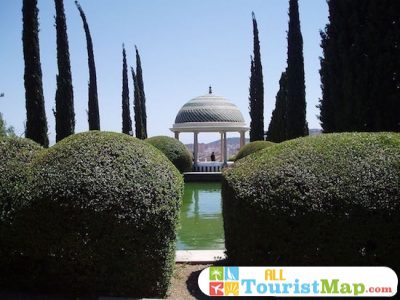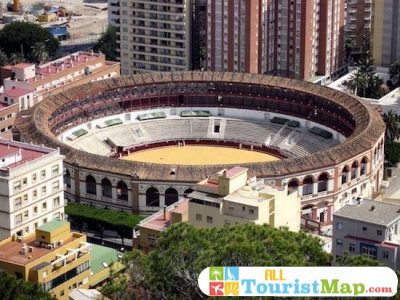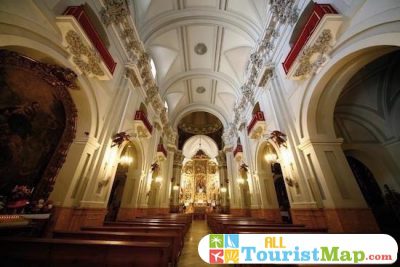The city of Malaga has been declared a Historic Site, because it has been marked by the footsteps of several civilizations over the years. An authentic city, full of tourist sites to visit, offering a cultural and millenary adventure, full of landscapes and architectural works with a lot of history: inside the Tourist Map of Malaga you can find monuments, cathedrals, squares, parks, palaces that keep, in their walls and inside, the wonderful history of the passage of the Romans, Muslims, turning the city of Malaga into a real historical temple that you cannot miss.
Tourist Map of Malaga
Contents
It is the capital of the province of Malaga, in the autonomous community of Andalusia. It is located in the south of the Iberian Peninsula and in the north of the Mediterranean Sea. It has an area of 7,276Km2 with a population of 570,000 inhabitants in 2017, being the largest and most populous coastal city in Spain. It was founded by the Phoenicians, after their conquest in the eighth century, went from being a federated municipality to a Latin right of the Roman Empire, where it was incorporated into the Crown of Castile in 1487 as an Andalusian medina. It has a cold climate in the mountains where it snows frequently, with rain in autumn and spring, the annual average temperature is 18.5°C, the summers are hot where it has reached up to 44°C.

Malaga has been a place of passage for many civilizations, so it has sites loaded with history ideal for tourism. In the historical centre of the city there are architectural works where you can observe the passage of cultural currents, where the Alcazaba, the Roman Theatre, Monte Gibralfaro, the Cathedral of Malaga, the Church of the Sagrario stand out. It also has modern architecture such as the Palmeral de las Sorpresas, Villasuecia, San Telmo Aqueduct, Edificio de la Equitativa that can be seen during the tour of the city. Its coastal landscapes offer numerous places to visit, being the beaches of Malaga famous for their beauty, Pedregalejo Beach, El Palo and El Candado are the most popular. It also has archaeological sites such as the Nazarí Wall and port wall, the Phoenician Wall and the Prehistoric Park of Málaga.
Malaga Tourist Guide
Malaga is full of tourist sites that cover the expectation of the traveler, starting with the historical-religious architectural works, buildings where you can contemplate the different religious cultures that have passed through this city since its foundation, the majesty in its urban and natural landscapes can be traveled in a tourist bus to the Park of Malaga, walk through the Botanical Garden where several species of important plants of the ecosystem live, also during this tour of Malaga, you can know the Picasso Museum of Malaga, dedicated to who was one of the most famous painters in the world, born in this city.
What to visit in Málaga
Malaga Cathedral

The beautiful Cathedral of Malaga is named after Santa Iglesia Catedral Basílica de la Encarnación, located in front of the Plaza del Obispo, was built in 1528 on the site of the former Great Mosque, designed by the architect Pedro López and Enrique Egas. It was catalogued as an Asset of Cultural Interest with the category of Monument in 1985 and Historic-Artistic Monument in 1937. Inside this cathedral there are valuable pieces and works of art among which are the Gothic story of the Chapel of Santa Barbara and the sepulchres of the Chapel of San Francisco from the 16th century. There is also the Chapel of the Incarnation designed by Ventura Rodríguez with neoclassical agate stone.
Alcazaba

One of the places to visit in Malaga is a wonderful fortification from the Muslim era, which was built right on top of what used to be a Phoenician-Punic fortress. Located at the foot of Mount Gibralfaro, attached to the historic centre of Malaga, its name in Arabic means citadel, becoming part of the historical monuments of the city. It was built between 1057 and 1063, by order of the king of Taifas Badis Ben Habus, passing to the Nazareth kingdom, when in 1879 King Muhammad II Ben Al-Ahmar conquered the city. The Plaza de Armas is one of the most preserved and attractive parts, its military aspect places it as one of the most important Muslim works in Spain.
Mount of Gibralfaroç
An archaeological and geological treasure within the city of Malaga, at an altitude of 130m, where the Phoenicians founded the city of Malaka. It is part of the Montes de Málaga, which is the mountain range of the Penibetic mountain range. This mountain is covered by a large forest of pines and eucalyptus trees that allow an air of freshness in the site. At the top of this mountain is the majestic Castle or Alcazar de Gibralfaro, and at its feet you can see other monuments and historical buildings within which are, the fortress of Alcazaba, the structure of the Roman Theatre, the Seminary and the famous Dark Door Gardens, being places to visit in Malaga that can not be missed.
Malaga Park

It is a territory that extends over 30,000mts2 limited by the Alameda Principal and the Paseo de España, covering the Plaza del General Torrijos to the Plaza de la Marina. It was built as an extension of the Alameda Principal, in 1896, however a politician suggested to take this territory as a port enclosure so it was not until 1876 that it was finished as Parque de Málaga, making its first plantations in 1899. The park has undergone some remodelling, and it is home to up to 300 species in terms of biodiversity. In addition to enjoying a natural landscape, during a tour of the park one can observe busts and obelisks of great figures from Málaga such as Arturo Reyes and Rubén Darío, among others.
Main avenue

This avenue is one of the busiest tourist sites in Malaga, being one of the main avenues in the city centre. In the medieval times the defensive walls were located in this place, then it was configured as a walkway full of trees, being built with remarkable houses, becoming an urban area of Malaga. Along this contemporary artery of Malaga are remarkable buildings such as the Municipal Archives of the eighteenth century, the Taillefer Building, the building of the Equitativa, the institutional headquarters of Cajamar and the Headquarters of the Government of Andalusia. During Easter Week, it is the first street where the official route begins and where all the brotherhoods have to pass.
The Roman Theatre of Malaga

It is part of the majestic remains of the Roman Hispania located in the historic center of Malaga, on Mount Gibralfaro, corresponding to the early years of the empire, was a mixed construction of the time of Augustus in the first century BC, maintaining its use until the third century, where they took advantage of the mountainside to make the stands in the best style of Greek theaters. It was discovered in 1951, as it was hidden for many years by the building of the House of Culture, where you can see the stage, the remains of the Orchestra, a place reserved for senators and the cavea, the thirteen steps and the entrances to the stands, a place called the vomitorium.
La Concepción Botanical Garden

This natural beauty was created in 1855 by the Marquises of Casa Loring, with an English landscape style, is located at the north entrance of the city of Malaga placing it within its tourist map as one of the destinations that can not miss. It has a biodiversity of 50,000 plants, consisting of approximately 2,000 different species, subtropical and native, which highlights the collection with more than 100 species of palms, bamboos, and aquatic plants. It has a Historical Garden that was declared a Property of Cultural Interest in 1943, being the part of the garden that houses the most important and monumental specimens of the place, in which is the Wisteria Diner, the Nymph, and the Loringian Museum.
Málaga Bullring

This infrastructure is located in La Malagueta, in the eastern district of Málaga. It was built by Joaquín Rucoba in 1874 and inaugurated in 1876. It has a neo-Mudejar style, in the shape of a hexadecagon. It has a ring of 52 meters in diameter, with four corrals in its facilities, 10 chiqueros, corraleta for horse testing, bullfighters’ hall, infirmary and stables. Also within its premises is located the Antonio Ordoñez Bullfighting Museum. This bullfighting ring, apart from making bullfights during the season, is taken as the centre of the local festivities. During the Holy Week, two bullfights are held, including the so-called Picassian Bullfight and the Bullfight of the Press.
La Victoria Sanctuary

This beautiful religious temple is named after the Basilica, Sanctuary and Parish Church of Santa María de la Victoria y de la Merced, which is one of the main churches in the city of Málaga. The church was built at the beginning of the 16th century, when the image of the Virgin of the King’s Oratory was brought in as patron saint. The most outstanding architectural feature is the “camarín” tower, in the most attractive and important sculptures is the carving of Santa María de la Victoria itself, presumably made by a German sculptor. Inside the church is the Pantheon of the Counts of Buenavista, is one of the most dismal of Spain to take a dark decoration, which highlights skeletons and images of death in white plaster.
Picasso Museum Málaga

This temple of art is dedicated to Pablo Picasso who was born in the city of Malaga. It was built as a result of a donation made by Pablo Picasso to Juan Temboury in 1953, who had asked him to donate two works, and the painter responded by sending him a hundred of them. It contains two hundred and eighty-five innovative works by Pablo Picasso, as well as the styles, techniques and materials he used in his works, with his vision of classicism, passing through the superimposed planes of cubism, ceramics and the last paintings of the seventies. The museum was opened in 2017 and boasts a hundred and sixty-six new works that helped to expand the catalogue of paintings.
Map of Hotels in Málaga
To enjoy all these tourist sites around Malaga we have a Hotel Map of the city that can help you find the hotel that best suits your needs. If you want to get to a hotel near the center we recommend the Room Mate Hotel, because it is only one kilometer from downtown, near many tourist sites and offers visitors the best care in the area by providing its best services. But if distance is not a problem, we also recommend Hotel Don Curro Larios, which is even closer, one kilometer away, where the assistance is excellent and its rooms are very comfortable.
